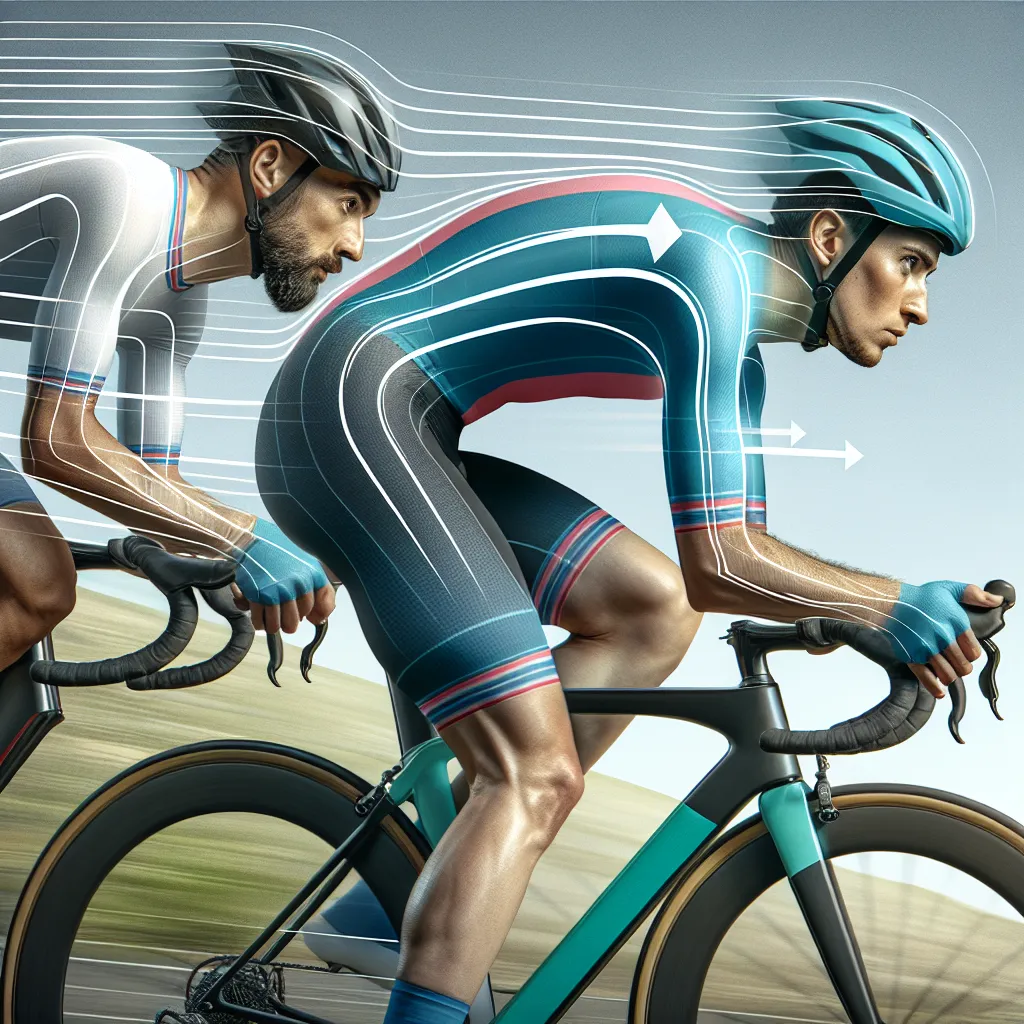Drafting in cycling, also known as slipstreaming, is a crucial technique in competitive cycling that can significantly impact race outcomes. As an IELTS candidate, understanding this concept and its related vocabulary can enhance your performance in the test, particularly in the Reading and Speaking sections. Let’s dive into the intricacies of this term and explore how you can effectively use it in your IELTS preparation.
Understanding the Term ‘Drafting in Cycling’
Definition: Drafting in cycling refers to the technique where a cyclist rides closely behind another cyclist or vehicle to reduce wind resistance and conserve energy.
Part of Speech: Noun (when referring to the technique) or Verb (when describing the action)
Pronunciation: /ˈdrɑːftɪŋ ɪn ˈsaɪklɪŋ/

Context and Usage
-
In competitive cycling: “Drafting is a common strategy in the peloton, allowing riders to conserve energy for critical moments in the race.”
Analysis: This sentence illustrates the strategic use of drafting in professional cycling, emphasizing its importance in energy conservation.
-
In training: “Cyclists often practice drafting techniques during team training sessions to improve their efficiency and race performance.”
Analysis: Here, drafting is presented as a skill that requires practice, highlighting its significance in cycling training regimens.
-
In cycling regulations: “Some triathlon events prohibit drafting to ensure individual performance is measured fairly.”
Analysis: This example shows that drafting can be a controversial technique in certain cycling-related sports, indicating its potential impact on race outcomes.
-
In everyday cycling: “Even casual cyclists can benefit from drafting when riding in groups, especially against strong headwinds.”
Analysis: This sentence extends the concept of drafting to non-competitive cycling, demonstrating its broader applicability.
-
In cycling aerodynamics: “The science behind drafting involves reducing the low-pressure area behind the lead cyclist, which typically causes drag.”
Analysis: This example delves into the physics of drafting, providing a more technical explanation of how it works.
In the IELTS exam, ‘drafting in cycling’ is more likely to appear in Reading passages about sports, physics, or aerodynamics. It may also be a topic in Speaking Part 3 discussions about sports strategies or in Writing Task 2 essays about fair play in sports.
Vocabulary Analysis
Word Structure
The term ‘drafting in cycling’ is a compound phrase:
- ‘Drafting’ is derived from the verb ‘to draft’, with the ‘-ing’ suffix indicating ongoing action.
- ‘Cycling’ is a gerund form of the verb ‘to cycle’, used here as a noun to specify the context.
Synonyms and Antonyms
Synonyms:
-
Slipstreaming /ˈslɪpstriːmɪŋ/ (noun/verb): Riding in the reduced air pressure behind another cyclist or vehicle.
Example: “Slipstreaming is an essential skill for any competitive cyclist.” -
Wheelsucking /ˈwiːlsʌkɪŋ/ (noun/verb): A colloquial term for drafting, often used with a slightly negative connotation.
Example: “Some cyclists criticize excessive wheelsucking as a form of taking advantage without contributing to the group’s effort.” -
Sheltering /ˈʃeltərɪŋ/ (verb): Taking cover behind another cyclist to avoid wind resistance.
Example: “The team’s strategy involved sheltering their lead rider until the final sprint.”
Antonyms:
-
Breaking away /ˈbreɪkɪŋ əˈweɪ/ (verb phrase): Moving ahead of the main group of cyclists.
Example: “The cyclist decided to risk breaking away from the peloton, foregoing the benefits of drafting.” -
Riding solo /ˈraɪdɪŋ ˈsəʊləʊ/ (verb phrase): Cycling alone without the aerodynamic benefits of drafting.
Example: “Riding solo in a time trial requires immense physical and mental strength.”
Memorization Techniques
Mind Mapping
Create a mind map with ‘Drafting in Cycling’ at the center, branching out to related concepts:
- Aerodynamics
- Wind resistance
- Air pressure
- Race strategies
- Energy conservation
- Peloton dynamics
- Equipment
- Aero bikes
- Skinsuit
- Regulations
- Legal distances
- Prohibited situations
Storytelling Technique
Imagine a cyclist named Alex preparing for a big race. Alex spends months practicing drafting techniques, learning to stay close to other riders without touching wheels. During the race, Alex expertly drafts behind the lead group, conserving energy. In the final stretch, Alex uses the saved energy to break away and win the race, demonstrating the power of effective drafting.
Practice Exercises
-
Write a paragraph describing the advantages and potential risks of drafting in cycling.
-
Create a dialogue between two cyclists discussing drafting strategies for an upcoming race.
-
Compose an IELTS Writing Task 2 essay on the topic: “Some people believe that drafting should be banned in all cycling competitions. To what extent do you agree or disagree?”
Remember to use the term ‘drafting in cycling’ and its related vocabulary naturally in your responses.
Conclusion
Mastering the concept and vocabulary of ‘drafting in cycling’ can significantly enhance your performance in the IELTS exam, particularly in tasks related to sports, physics, or competitive strategies. By understanding its context, related terms, and practicing its usage, you’ll be well-equipped to handle this topic confidently.
We encourage you to practice using this vocabulary in your own sentences and discussions. If you have any questions about ‘drafting in cycling’ or how to use it in the IELTS context, please feel free to ask in the comments section below. Keep pedaling towards your IELTS success!